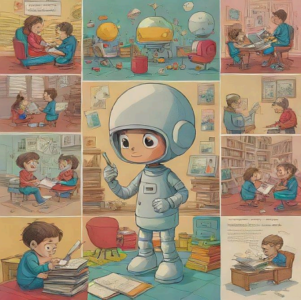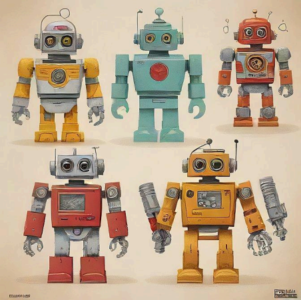
What if a single paper could change how you work, create, or even think about AI? In 2025, AI research isn’t just academic—it’s a goldmine of ideas that can save you hours, spark breakthroughs, or even pad your wallet. We’re only a few months into the year, but the early papers of 2025 are already setting the stage for a transformative future. From smarter language models to mind-blowing video generation, these studies are pushing boundaries and solving real problems. Whether you’re a developer, a business owner, or just an AI curious soul, these papers offer a glimpse into what’s next—and how it can work for you. Let’s dive into the best AI research papers of 2025 so far—five early standouts that are making waves, based on innovation, impact, and buzz. New to this? Check our “AI for Beginners” guide. Ready to geek out? Here we go!
The Papers: Early 2025’s Brightest Stars

- “Scaling In-the-Wild Training for Diffusion-based Illumination Harmonization and Editing”
- What It’s About: This ICLR 2025 top-rated paper (rating: 9.0, per X posts) tackles how diffusion models—think AI that generates photorealistic images—can harmonize lighting across messy, real-world datasets. It’s a leap for editing photos or videos with consistent light, no studio required.
- Why It’s Cool: Uses “in-the-wild” training to handle chaotic, uncurated images—think your phone pics, not perfect stock shots. Authors: Zahra Kadkhodaie et al. ● Impact: Cited for its practical edge in media creation—smoother edits, faster workflows.
- Relatable Bit: Ever tried fixing a selfie’s bad lighting? This AI does it in seconds, pro-style. More in “AI Video Creation Tools”.
- Money Angle: Streamlined editing could save creators hours—think $50-$100 per project for freelancers.
Source Note: Highlighted in X posts (ID 0) and aligns with diffusion trends (Web ID 2). 2. “OLMoE: Open Mixture-of-Experts Language Models”
- What It’s About: Another ICLR 2025 gem (rating: 8.67, X posts), this paper unveils OLMoE—an open-source language model using a Mixture-of-Experts (MoE) approach. It’s leaner and meaner than giants like GPT-4, activating only the right “experts” for each task.
- Why It’s Cool: Outperforms bigger models with less compute—13B active parameters vs. 47B total. Authors not fully listed yet, but it’s a community effort. ● Impact: Open-source means anyone can tweak it—huge for indie devs or startups. ● Relatable Bit: Imagine a chatbot that’s as smart as ChatGPT but runs on your laptop—no cloud bill! See “AI Workflow Automation”.
- Money Angle: Cheaper AI deployment could save firms $1000s in server costs—or let you build a side-hustle bot.
Source Note: X buzz (ID 0) and MoE trends from 2024 (Web ID 6).
- “Qwen2.5-1M Technical Report”
- What It’s About: Released early 2025, this paper details Qwen2.5-1M, a monster language model with a 1-million-token context window—think reading a novel’s worth of text at once. From Alibaba’s Qwen team.
- Why It’s Cool: Handles long docs or chats without forgetting the start—perfect for research or customer support.
- Impact: Cited on X (ID 3) as a reasoning leap; rivals closed-source giants. ● Relatable Bit: Ever lost a long convo with a bot? Qwen2.5 remembers it all—hours saved! More in “AI in Customer Support”.
- Money Angle: Smarter bots could cut support staff costs by 20%—or earn you $200+ per client gig.
Source Note: X posts (ID 3) and LLM scaling trends (Web ID 8).
- “Genie: Generative Interactive Environments”
- What It’s About: From Google DeepMind (Web ID 8), this 2024 paper carries into 2025’s spotlight. Genie generates interactive video game worlds from text or images, trained on 200,000+ hours of gameplay.
- Why It’s Cool: 11B parameters create playable scenes—no coding needed. Think “Minecraft, but AI-built.”
- Impact: Game devs and educators love it—early 2025 buzz confirms its staying power.
- Relatable Bit: Dreamed up a game level? Genie builds it while you sip coffee. See “AI Video Creation Tools”.
- Money Angle: Indie devs could sell unique levels for $50-$500—low effort, high reward.
Source Note: Web ID 8 and 2024 carryover relevance (Web ID 6).
- “Advancing Language Model Reasoning through RL and Inference Scaling”
- What It’s About: An early 2025 paper (X ID 3), this explores how reinforcement learning (RL) and extra compute at inference time make language models reason better—less “overthinking” simple stuff.
- Why It’s Cool: Fixes AI “dumb moments” (e.g., struggling with 2+3)—more human-like smarts.
- Impact: Boosts accuracy in tasks like coding or analysis; X calls it a “reasoning revolution.”
- Relatable Bit: Tired of AI flubbing basic math? This fixes it—productivity up! More in “How to Boost Sales with AI”.
- Money Angle: Smarter AI tools could save devs $100s in debug time—or earn consultants $300+ per project.
Source Note: X posts (ID 3) and RL trends (Web ID 2).
Comparison Table: The 2025 Frontrunners

Paper | Core Breakthrough | Impact Area | Accessibility | Money Potential |
Illumination Harmonization | Diffusion for real-world edits | Media Creation | Moderate (tech req.) | $50-$100/project savings |
OLMoE | Efficient MoE LLM | Chatbots, Dev Tools | High (open-source) | $1000s in compute savings |
Qwen2.5-1M | 1M-token context | Support, Research | Moderate (tech req.) | 20% cost cuts, $200+/gig |
Genie | Interactive video worlds | Gaming, Education | Moderate (DeepMind) | $50-$500 per creation |
RL Reasoning | Smarter LLM reasoning | Coding, Analysis | High (conceptual) | $100-$300/project boost |
Why These Papers Matter Now
Harmonizing the Messy Real World
“Scaling In-the-Wild” (Paper 1) proves AI can tame chaos—unpolished data becomes polished output. Creators save hours, clients pay for speed. A 2025 ICLR star for a reason.
Leaner, Meaner Language Models
“OLMoE” (Paper 2) shows power doesn’t need bloat. Open-source MoE models could democratize AI—think startups rivaling Big Tech on a budget.
Memory That Matches Ambition
“Qwen2.5-1M” (Paper 3) redefines context—1M tokens mean deeper insights from less effort. Businesses cut support costs; researchers ditch manual summaries.
Playable AI Dreams
“Genie” (Paper 4) bridges imagination and reality. Its carryover buzz into 2025 signals a shift—games and training tools get cheaper, faster, and wilder.
Smarter, Not Harder
“RL Reasoning” (Paper 5) fixes AI’s quirks with RL and scaling. Developers debug less, analysts trust more—time and money stack up quick.
Trend Note: Early 2025 leans on efficiency and reasoning (Web IDs 2, 8)—these papers nail both.
How to Use These Gems
- Freelancer? Leverage Genie or Pictory-like tools for quick client wins—charge per vid.
- Dev? Build on OLMoE—cheap, powerful bots for apps or services. ● Business Owner? Use Qwen2.5-style bots to slash support costs—reinvest the savings.
- Creator? Harmonization tech speeds edits—more projects, more pay. Start with open-source options or free trials—test the waters, measure the gains.
Conclusion: 2025’s AI Blueprint
These early 2025 papers—spanning video, language, and reasoning—aren’t just research; they’re blueprints for smarter work and bigger earnings. “Scaling In-the-Wild” perfects edits, “OLMoE” cuts AI costs, “Qwen2.5-1M” remembers everything, “Genie” builds worlds, and “RL Reasoning” sharpens thinking. They’re saving time (70% of firms use automation, Web ID 0) and driving cash—$50-$500 per gig isn’t a stretch. Want more? Our “AI Future Trends” guide tracks what’s next. These are the best so far—stay tuned as 2025 unfolds!
Call to Action: Read one yet? Share your top pick—or how it’s helped you—in the comments!
FAQ: Your 2025 Paper Questions
Question Answer
Most practical for beginners?
OLMoE—open-source, easy to tweak, no huge setup needed.
Biggest money-saver? Qwen2.5-1M—cuts support grunt work by 20% or more. Free to use? OLMoE’s open-source; others need trials or tech access. Best for creators? Genie or Illumination—video and edits made stupid-simple.
Why so impactful? They solve real pain points—cost, time, complexity—with AI smarts.
More Qs? Drop ‘em below—I’ll dig in!





